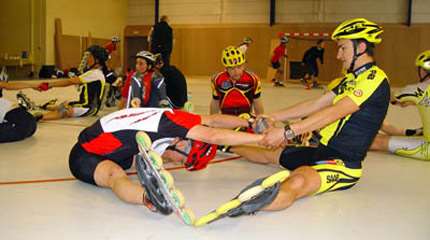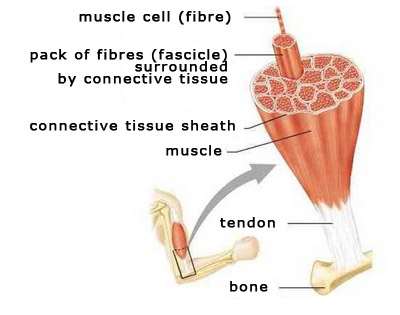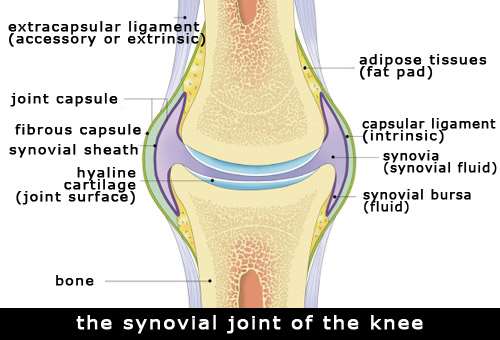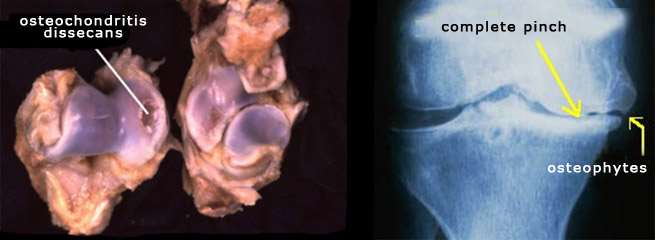Impact of muscle stretching on health and sports practice
Stretch, they said! And what if we broke down prejudices on stretching? All our youth, they kept on telling us how good and essential it was to stretch for sports performances… And what if new studies were challenging all of that?
Par alfathor
Good or bad?
 You do one of the many disciplines of roller-skating. You practice your technique, you train your physical condition, you even work out regularly every week; then you are tonic but a bit stiff when you look for amplitude outside the context of your favorite sport… and you would like to be more supple in order to:
You do one of the many disciplines of roller-skating. You practice your technique, you train your physical condition, you even work out regularly every week; then you are tonic but a bit stiff when you look for amplitude outside the context of your favorite sport… and you would like to be more supple in order to:
- improve your skating
- warm up and make your muscles looser before training or competition in order to improve your performances
- avoid stiffness after training
- gain mobility and strength back for the next session
- avoid muscle injuries during efforts in competition
You are convinced that warming up is all or partly about stretching?
You are wrong, just like us who have made that mistake for 30 years of professional physiotherapy and 10 years of skating. Regularly stretching for the ‘good’ reasons mentioned above would be useless.
Stretching during warm-up
- does not improve sports performance: on the contrary, reduces muscular efficiency (Fowles J.) of about 10% up to one hours after stretching!
You think that you are warmed up and stronger, that is wrong. - does not reduce at all the risk of muscle injury: on the contrary, improves that risk because of a phenomenon of inhibition of the sensitive receptors of the muscles (Shrier I.)
You think that you protect your muscles from effort injury, that is wrong. - does not help muscle recovery after effort or metabolic waste elimination generated by effort: on the contrary, the endogenous measurements of creatine rate are superior to those of a non-stretched muscle (Buroker K.C.)
You think that you recover more quickly and suffer less from stiffness, that is wrong.
 « Cool, that’s handy! » you must say « wriggling after training annoys me so much… I could go and have a shower and a beer instead ».
« Cool, that’s handy! » you must say « wriggling after training annoys me so much… I could go and have a shower and a beer instead ».
What is the use of stretching?
You may have a larger vision of your mental and physical health thanks to sports practice. You may also think about the evolution of your health for the next 30 or 40 years.
In that case, let’s explain the necessity of adding a supplementary stretching practice daily or weekly according to your availability and motivation.
A little bit of physiology
Our skeletal muscles are made of units called sarcomeres, gathered in fibres, then in muscle units and finally in skeletal muscle-tendon complexes.
Globally speaking, the visco-elastic structure of the muscle enables it to be stretched, the fibrous structure of a tendon can be stretched by 5% and the elasticity of a living bone is only measurable with precision instruments.
Joints are singular units combining an incredible lubrication with ‘living’ sliding planes, and held in a ‘corseted’ capsule by thickenings called ligaments.
 Very poetic, don’t you think?
Very poetic, don’t you think?
But with time… your joints need to ‘breathe’
- The synovial membrane has to be stretched then relaxed in order to produce and recycle the synovial fluid that will provide nutrition to the cartilages.
- The (hermetic) capsule and the ligaments need to be stretched in order to reduce the negative pressure (-32mmHG, yes indeed!) inside the joint and enable the cartilaginous surfaces to absorb the synovial fluid by capillarity.
With time, your joints will unfortunately end up looking like these pictures!
But if you stretch regularly, you will postpone the outcome.
The filaments of your muscle fibres need to be ‘spread’ in order to activate the chemical receptors of the muscle spindle, and thus fill up with chemical fuel for the contraction effort.
You are a lot more zen after a stretching session! Who never felt that intellectual relaxation?
Why should you stretch?
- The muscles and tendons ensure the mobility of the joints
- The capsule and the ligaments insure the solidity of the joints
Thus a good stretching should be general and poly-articular.
In the context of our sports practice, we seek to preserve an amplitude of movement compatible with a fluent and loose skating; the main idea of stretching should be reaching angulations a bit wider than those used during a maximal effort.
To make it simple, you should follow five points during stretching sessions:
- relax
- find your own tension o the key-moment
- move slowly
- take time to stretch even more slowly
- breathe in accordance with the tension induced during stretching

Bibliography
LIEBER R.-L., FRIDEN J. Mechanisms of muscle injury after eccentric contraction.
SHRIER I. Stretching before exercise does not reduce the risk of local muscle injury : a critical review of the clinical and basic science literature.
FOWLES J.-R., SALE D.-G., MACDOUGALL J.-D. Reduced strength after passive stretch of the human plantarflexors.
CHURCH B., MATTHEW S., WIGGINS F., MOODE M, CRIST R Effect of warm-up and flexibility treatments on vertical jump performance J Strength Cond Res.
NELSON A.-G., GUILLORY I.-K., CORNWELL C., KOKKONEN J. Inhibition of maximal voluntary isokinetic torque production following stretching is velocity-specific.
COMETTI Gilles, Les limites du stretching pour la performance sportive
Links
Translation: Chloé Seyres
Photos: rollerenligne.com & all rights reserved
